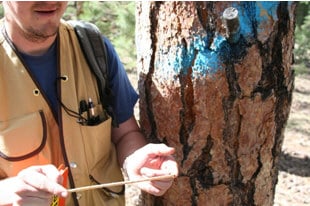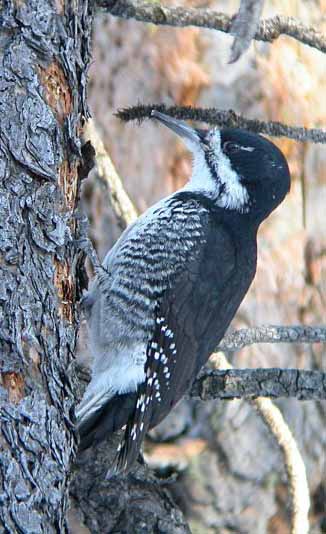On Wednesday RY Timber, Pyramid Mountain Lumber, Roseburg Forest Products and Sun Mountain Lumber took out this full-page advertisement in at least six Montana newspapers, including the Helena Independent Record, Missoulian, Kalispell Daily Interlake, Great Falls Tribune, Montana Standard and Bozeman Chronicle. According to Ad reps, the retail cost of the advertisements likely ran between $27,000 and $31,000.
Among other things, the timber industry Ads called for 1) scrapping the entire Forest Service public appeals process and 2) exempting many timber sales in Montana from judicial review. These are the same timber companies pushing Senator Tester’s mandated logging bill, the Forest Jobs and Recreation Act, which would require logging on over 156 square miles of the Beaverhead-Deerlodge and Kootenia National Forest over the next 15 years. More information on the timber industry Ads can be found here. Today, Mike Garrity – Alliance for the Wild Rockies executive director and a 5th generation Montanan – responds to the Ad with this guest column in the Montana Standard.
________________
No ‘lawless logging’ in Montana
By Mike Garrity
A handful of timber corporations recently took out full-page ads statewide to criticize the Alliance for the Wild Rockies for doing what we do well — working to keep Montana “high, wide and handsome” as Joseph Kinsey Howard famously wrote.
We protect public land from corporations and government bureaucracies that want to log public lands without following the law. To put it simply, they want to return to the “good old days” before we had any environmental laws and corporations such as the Anaconda Company called all the shots.
As a fifth generation Montanan, I clearly recall the days when Silver Bow Creek ran red with mine waste and the Clark Fork River was a dead, sludge-filled industrial sewer. And it was not that long ago when you had to turn your car lights on in the middle of the day in Butte because the air was so polluted. These were also the days when our forests had little big game and native fish were beginning to vanish because of massive clearcutting.
Today Montana has some of the best hunting and fishing in the world. The state recently celebrated the return of native westslope cutthroat trout to Silver Bow Creek and Milltown Dam no longer holds millions of tons of toxic waste seeping into the groundwater.
Do we really want to go back to these good old days of cut-and-run where there are no environmental laws? Montanans love our national forests, which belong to the American people, not to the career bureaucrats in the Forest Service or the CEOs and stockholders of timber corporations.
Yet, in their ads, the timber corporations clearly laid out their goals for the conditions and laws they want applied to their personal profit-driven extraction of public resources. In their own words, the timber companies want to “scrap the entire Forest Service Administrative Appeals Process,” “exempt from judicial review those timber sales which deal with trees that have been killed or severely damaged by the Mountain Pine Beetle,” and “amend the Equal Access to Justice Act by requiring a cash bond in these types of administrative appeals and lawsuits.”
In plain language, what that means is that these corporations no longer want citizens to have a voice in how our public lands get used or abused. But that ignores both the history and intent of law and policy on public lands management.
Congress placed citizen suit provisions in virtually all federal environmental laws because citizens are often the only group willing to police the government. As the Federal Ninth Circuit Court of Appeals famously wrote, citizens “stand in the shoes” of regulatory enforcement agencies to enforce the law — and to do so without any prospect of personal benefit. If someone throws a brick through a window, the police would enforce the law. But when the federal government breaks the law, citizens are often the only enforcers.
Unfortunately a disturbing trend has appeared as big environmental groups such as the Montana Wilderness Association and The Wilderness Society increasingly take foundation money to “collaborate” with timber corporations. And much like the Vichy French helped the Nazis occupy France during WWII; these collaborators now have to face the harsh and shameful legacy of what they have done and continue to do.
Behind it all is the very simple truth now revealed by the timber companies’ own damning ads: these corporations want access and the subsidy to extract timber resources from public lands unencumbered by environmental laws. Their profit, our loss, and a return to the bad old days of corporate domination of Montana’s lands and people. But Montanans don’t want to return to those days when corporations like the Anaconda Co. controlled public policy and the rivers ran red with mine waste. We want a sustainable supply of clean water, fish, wildlife and timber.
It’s time to tell these corporations and their collaborative partners that the days of rape and run in Montana are over. Montana is worth fighting for, which is exactly what the Alliance for the Wild Rockies intends to continue to do.
Mike Garrity is executive director Alliance for the Wild Rockies.



